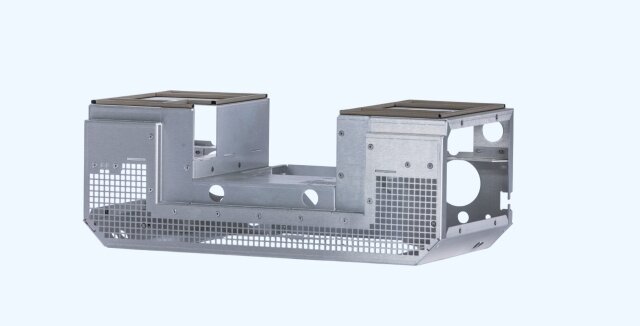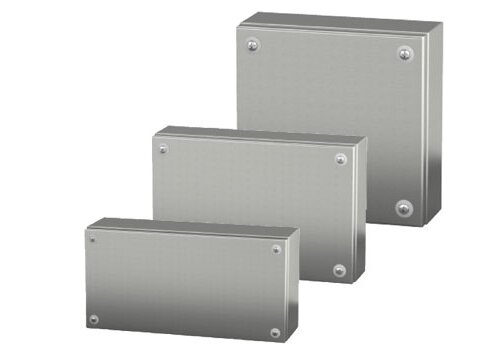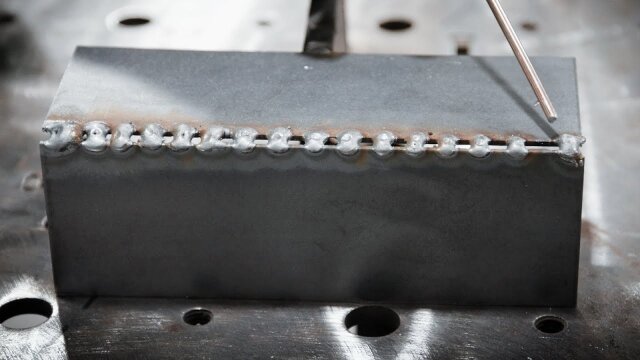When aluminum is not protected, it can face issues like corrosion, scratches, and surface wear. These problems reduce the life of the product and increase maintenance costs. Engineers, designers, and manufacturers often look for ways to make aluminum stronger, more durable, and better in appearance. Epoxy coating provides a practical solution. It forms a protective layer that improves strength, resists damage, and performs well in harsh conditions.
Epoxy coating helps aluminum last longer, look better, and stay reliable. Let’s review its main properties, benefits, and common applications.
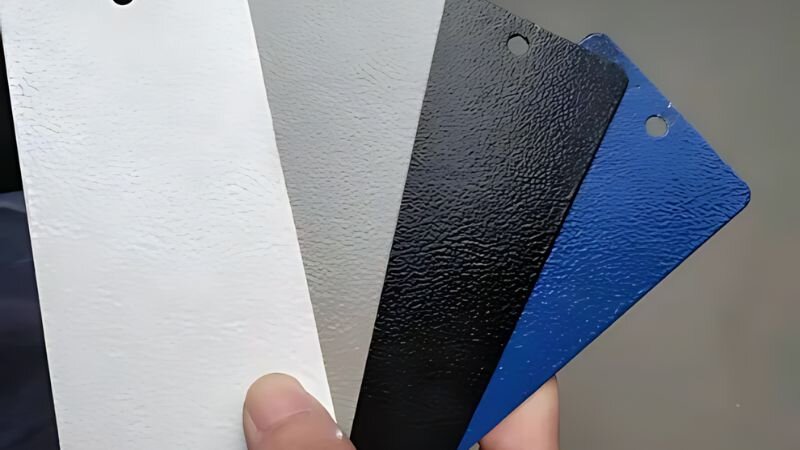
What is Epoxy Coated Aluminum?
Epoxy-coated aluminum is aluminum covered with a thin, even layer of epoxy resin. The resin bonds firmly to the surface, forming a tough, protective shell. This shell works as a barrier against moisture, chemicals, and wear. It also gives the surface a smooth finish, which can be clear or colored.
The coating is usually applied as a liquid epoxy or powder coating and then cured with heat to harden the layer. The result is aluminum with added strength and resistance. Raw aluminum is already light and strong, but it can corrode in specific environments. The epoxy coating solves this problem by adding an extra layer of protection.
Properties of Epoxy Coated Aluminum
Epoxy-coated aluminum combines aluminum’s light weight and strength with the protection of epoxy resin. The coating improves performance in many conditions, making the material more durable and versatile.
Mechanical Strength and Durability
The epoxy layer adds hardness to the aluminum surface. It protects against scratches, dents, and daily wear. This makes it suitable for parts that face regular handling or mechanical stress. The coating helps the aluminum stay strong and reliable over time by preventing surface damage and keeping its shape.
Corrosion and Chemical Resistance
Bare aluminum can corrode when exposed to water, salt, or chemicals. The epoxy coating creates a sealed layer that blocks these elements. This protection makes it useful for marine equipment, outdoor structures, and chemical industry parts. The coating reduces the need for frequent replacements by slowing down oxidation and surface damage.
Thermal and Electrical Insulation
Epoxy coatings also provide insulation. When applied to aluminum, they lower heat transfer and block electrical conductivity on the coated surface. This makes epoxy-coated aluminum a good choice for electrical enclosures, electronic housings, and heat-sensitive parts. The coating adds safety by reducing short circuits and limiting heat exposure.
Aesthetic and Surface Finish Qualities
The coating gives a smooth and uniform finish. Depending on design needs, it can be glossy, matte, or textured. It also offers many color options, making fitting both functional and visual requirements easier. The surface resists fading and staining, so the material keeps its look for a long time.
The Epoxy Coating Process
The epoxy coating process improves aluminum by adding a strong, protective layer. Each step ensures the coating bonds well and delivers reliable performance.
Surface Preparation
The most important stage is surface preparation. The aluminum must be clean, smooth, and free from oil, dirt, or oxidation. This is usually done with degreasing, chemical cleaning, or abrasive blasting. Sometimes, a primer or conversion coating is added to improve adhesion.
Application Methods: Powder Coating and Liquid Coating
Epoxy can be applied in two main ways: powder coating and liquid coating. Powder coating sprays dry epoxy particles onto the surface using an electrostatic charge. The particles cling to the aluminum and form an even layer.
Liquid coating uses epoxy resin in liquid form, which can be sprayed, brushed, or dipped onto the surface. Both methods create a strong protective layer. Powder coating is often chosen for larger production runs because it is efficient and provides consistent results.
Curing and Bonding Stages
Once the coating is applied, the aluminum goes through curing. This usually means heating the coated part in an oven. The heat makes the epoxy melt, flow, and bond chemically with the aluminum surface. After curing, the coating hardens into a solid and continuous layer.
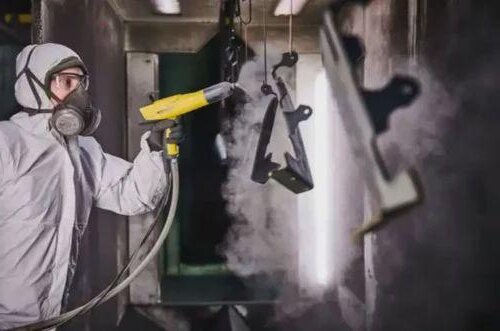
Advantages of Epoxy Coated Aluminum
Epoxy-coated aluminum offers several benefits that make it a popular choice in different industries. The coating improves performance, lowers maintenance needs, and increases the metal’s value.
Enhanced Resistance to Harsh Environments
The epoxy layer protects aluminum from moisture, salt, and chemicals. This makes it reliable in outdoor use, marine conditions, and industrial sites where metals are exposed to harsh elements. The barrier reduces corrosion and surface damage, helping parts stay functional longer.
Improved Lifespan of Aluminum Components
Adding epoxy coating extends the life of aluminum parts. The layer reduces oxidation, scratches, and dents that usually shorten the life of bare aluminum. This allows components to keep their strength and appearance even after long-term use.
Versatility
Epoxy-coated aluminum is suitable for many applications, including construction, automotive, aerospace, appliances, and consumer products. The coating serves both protective and decorative purposes, and various colors and finishes meet technical needs and design preferences.
Cost-Effectiveness
The durability of epoxy-coated aluminum makes it cost-effective over time. While the coating adds to the initial cost, the reduced need for repairs and replacements lowers overall expenses. This long-term value benefits both manufacturers and end users.
Limitations and Challenges
Epoxy-coated aluminum delivers strong protection, but it also has some limitations that need to be considered before use.
Potential Issues with Adhesion
The quality of the coating depends on good surface preparation. The epoxy may not stick well if the aluminum is not cleaned or treated correctly. Poor adhesion can lead to peeling, flaking, or bubbling. This weakens the protection and shortens the life of the coated part.
Environmental and Safety Concerns
Applying epoxy coatings often involves solvents and high-temperature curing. These steps can release volatile organic compounds (VOCs) and use a lot of energy. To protect workers and the environment, safe handling of chemicals and waste is required. Low-VOC or water-based epoxy options are available, but they may not always provide the same range of coating performance.
Performance Limits Under Extreme Conditions
Epoxy-coated aluminum works well in many settings, but it has performance limits. Constant exposure to very high heat can soften or damage the coating. Intense UV light may cause fading or chalking unless stabilizers are added. In highly abrasive conditions, the coating can wear down over time and may need repair or reapplication.
Industrial Applications
Epoxy-coated aluminum is valued across industries because it combines strength, protection, and appearance. Many sectors rely on it for durable, long-lasting parts.
Construction
Epoxy-coated aluminum is used in construction for panels, window frames, roofing, and decorative parts. The coating shields against rain, sunlight, and pollution. It also helps the surface stay clean and attractive with little maintenance.
Automotive
The automotive industry uses epoxy-coated aluminum for body panels, trim, wheels, and engine parts. The coating resists corrosion from road salt and chemicals and improves wear resistance, which is important for parts exposed to daily use and outdoor conditions.
Aerospace
In aerospace, low weight and durability are critical. Epoxy-coated aluminum is used for structural parts, interior panels, and protective housings. The coating slows oxidation at high altitudes and resists wear in demanding environments, extending part life while keeping weight low.
Electrical Enclosures
Epoxy coated aluminum is a common choice for electrical boxes, housings, and enclosures. The coating adds insulation, blocks moisture, and protects against corrosion in outdoor or industrial settings. This protection helps keep electrical systems safe and reliable.
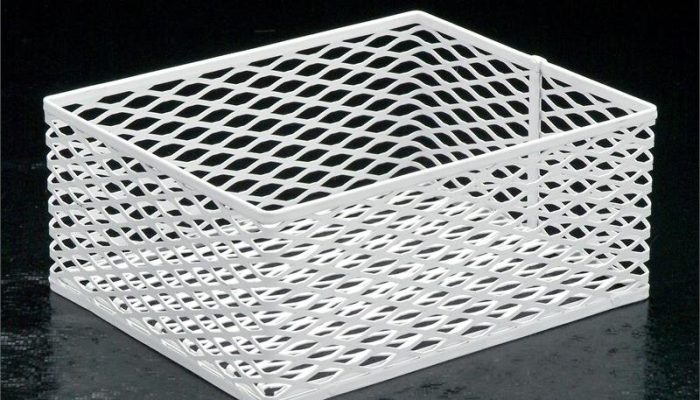
Selection Criteria for Your Project
Selecting epoxy-coated aluminum depends on the project’s specific needs. Several factors should be reviewed to ensure the material performs as intended.
Assessing Environmental Exposure
Start by looking at the conditions where the part will be used. If it will face moisture, salt, or chemicals, epoxy-coated aluminum provides reliable protection. A thicker or specialized coating may be required for more extended durability for outdoor or marine use, while indoor projects with lighter exposure may only need a thinner layer.
Aesthetic Requirements: Color and Finish
Appearance is often an essential factor. Epoxy coatings offer many color and finish options, including glossy, matte, and textured. If the part is meant to be decorative, the coating should match the design while still holding up over time. If appearance is less critical, a transparent protective layer may be enough.
Mechanical and Chemical Stress Factors
Consider the stresses the part will face. Parts exposed to heavy wear, impacts, or strong chemicals need a tougher epoxy formulation. The thickness and type of coating should match these demands. In high-contact applications, abrasion-resistant epoxy helps protect the surface. Coatings with higher chemical resistance are recommended for chemical plants or labs to prevent damage and extend service life.
Conclusion
Epoxy-coated aluminum combines the strength of aluminum with the protective benefits of epoxy resin. It offers durability, resistance to corrosion and chemicals, insulation, and an attractive finish, making it valuable in industries like construction, automotive, aerospace, and electrical systems.
Are you looking for reliable epoxy-coated aluminum solutions for your next project? Contact us today to discuss your requirements and get a tailored quote.
Hey, I'm Kevin Lee

For the past 10 years, I’ve been immersed in various forms of sheet metal fabrication, sharing cool insights here from my experiences across diverse workshops.
Get in touch

Kevin Lee
I have over ten years of professional experience in sheet metal fabrication, specializing in laser cutting, bending, welding, and surface treatment techniques. As the Technical Director at Shengen, I am committed to solving complex manufacturing challenges and driving innovation and quality in each project.


